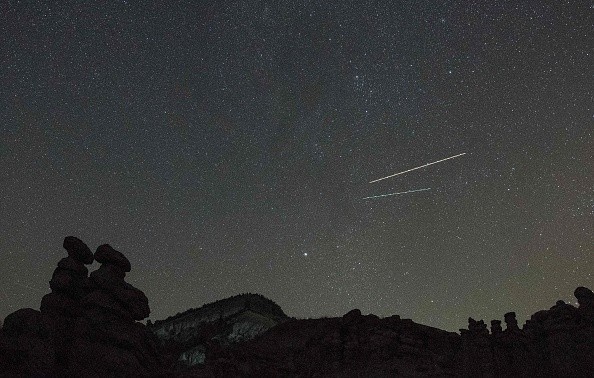The most-awaited longest night of the year unfolded this week. After December's solstice, the astronomical winter is set to begin.
While Americans prepared for the Christmas celebration and the threat of a winter storm, stargazers looked into the sky to wait for the longest night of the year with added meteor showers.
The view was magnificent, although some parts of the United States were anticipating extreme cold and heavy snow.
Longest night

The astronomical winter also began on December 21, 2022 (4:48 p.m. EST) as stargazers waited for the longest night of the year with meteor showers.
According to AccuWeather's recent report, the solstice also marked the shift to astronomical seasons, from meteorological season to astronomical season.
AccuWeather explained that December's solstice referred to the winter's sun's most direct rays and migration north through the spring equinox, noting that the rays focus on the Tropic of Capricorn in the Southern Hemisphere.
Although some might have noticed the longest night on Wednesday, it gave a rare opportunity for astronomy lovers and stargazers to witness the magnificence of the Ursid meteor shower.
According to the American Meteor Society, the Ursid Meteor Showers are active from December 13, 2022, to December 24, 2022. However, the report explained that the said meteor showers are often neglected.
Also Read : Geminids Meteor Showers to Unfold in the Sky; Wintry Weather Could Affect Astronomy Events Viewing
The American Meteor Society added that stargazers and meteor lovers could witness from five to ten Ursid Meteor showers per hour. In addition, an outburst of 25 meteor showers could be possible, noting that the Ursid Meteor shower is a northern hemisphere event.
Stargazers who are looking forward to the meteor showers should visit the website of the American Meteor Society. Scheduling the event ahead would help not to forget the rare meteor event.
Bringing a good camera and waiting patiently at night could provide observers with the best viewing conditions.
Geminids and Quadrantids
On the other hand, the Geminid Meteor Shower is also a much-awaited astronomical event from November 19, 2022, to December 24, 2022.
According to the Meteor Society, the peak of the Geminids happened on December 13 to December 14, 2022, at night.
Unlike the Ursid meteor shower, the Gemini ads could unload more colorful and bright meteor showers in the sky, which could be visible in the southern hemisphere.
Furthermore, the report added that this year's Quadrantid meteor shower is also a strong one. However, the Quadrantids unveil in the sky in the shortest activity. The weather conditions could impact the said meteor showers.
The American Meteor Society explained that the next peak of Quadrantids could occur at night from January 3 to January 4, 2022.
Although December's solstice ended, the astronomical winter has begun. For many stargazers, next year would be a new year of many astronomical events and meteor showers.
Preparing your cameras to witness the event is important to save the rare sightings in the sky. Also, stargazers should consider the weather conditions because they could provide a poor view.
Related Article : Christmas Asteroid Doesn't Pose Any Danger as it Reaches Closer Approach to Earth, Report Says
For more similar stories, don't forget to follow Nature News.
© 2025 NatureWorldNews.com All rights reserved. Do not reproduce without permission.





